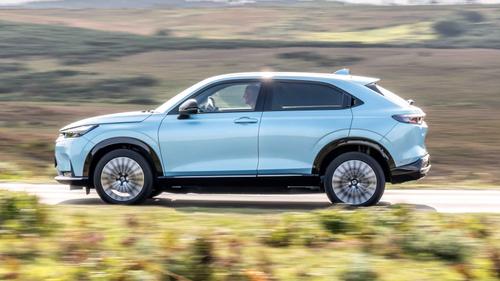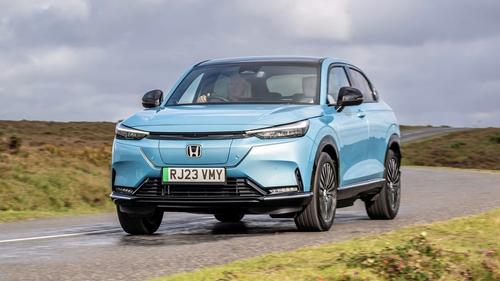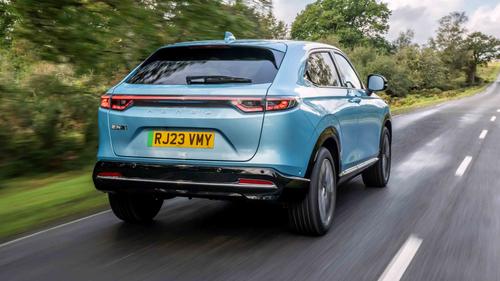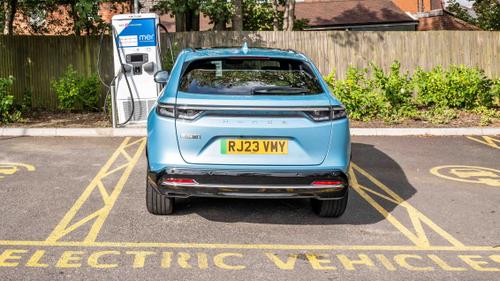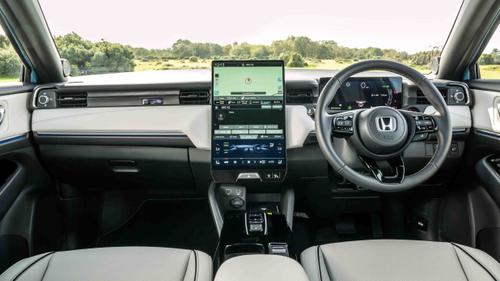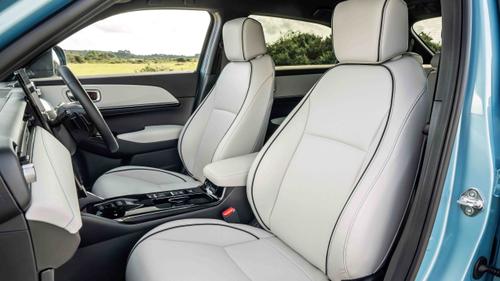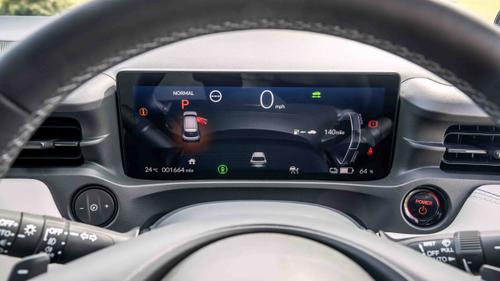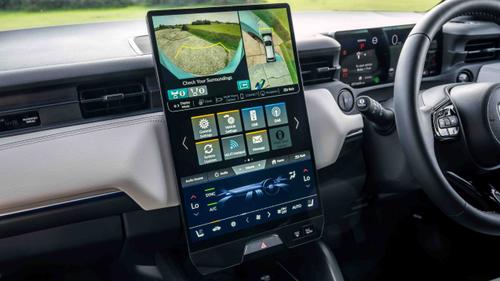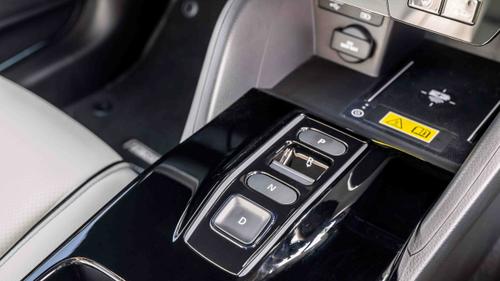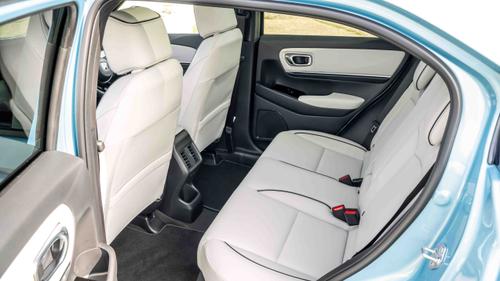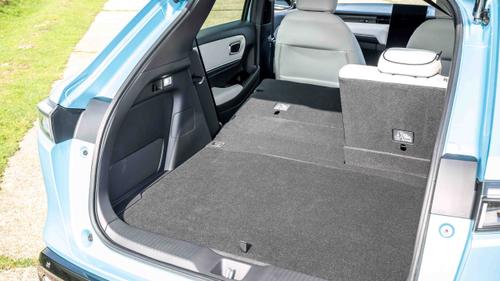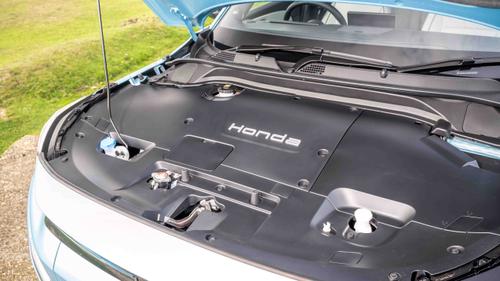
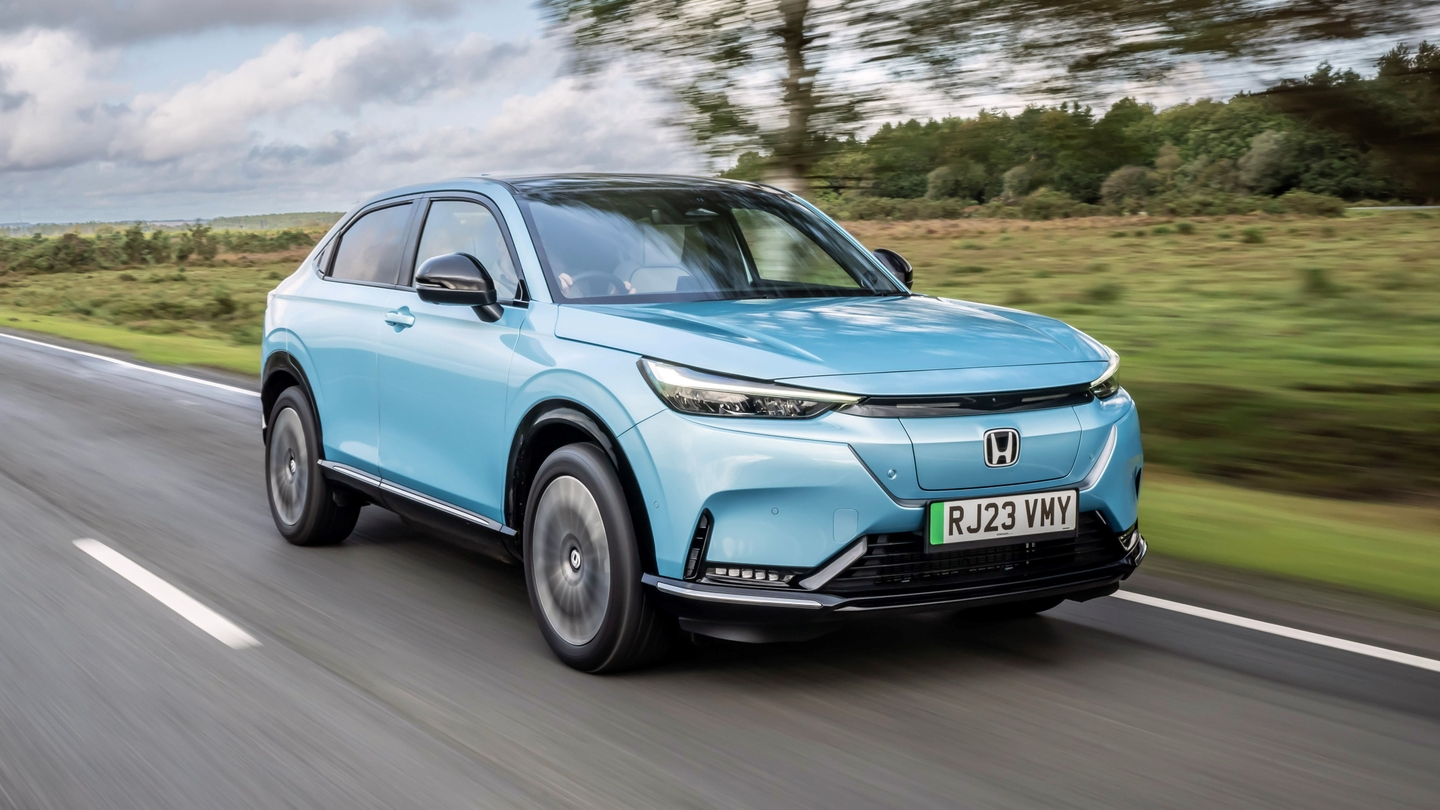
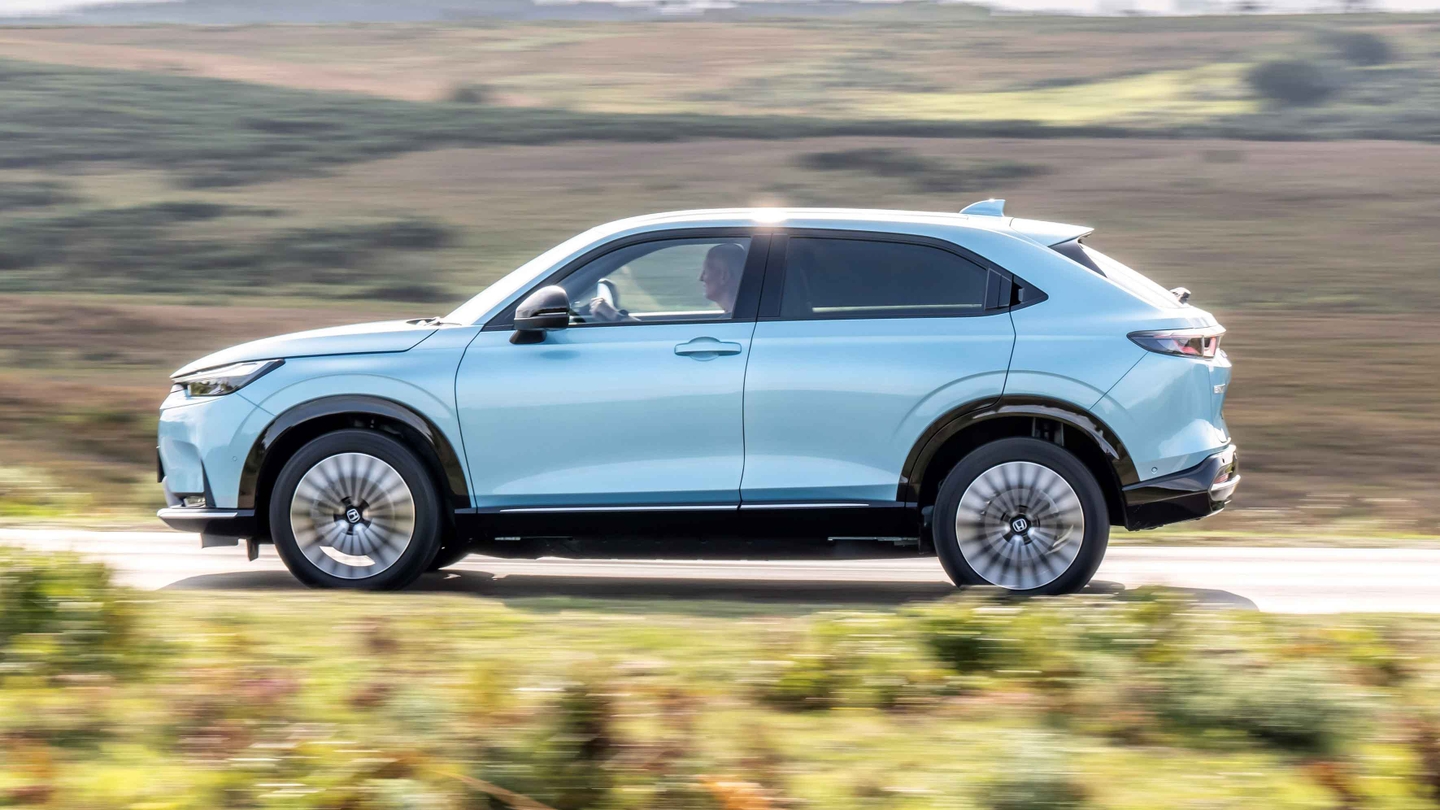
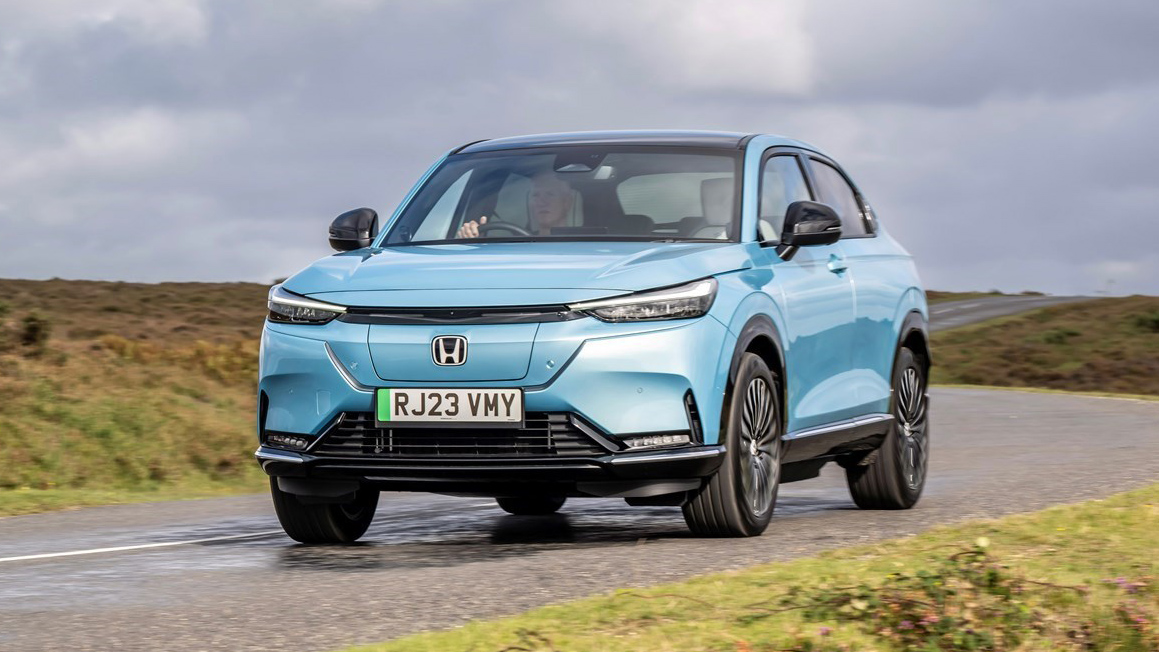
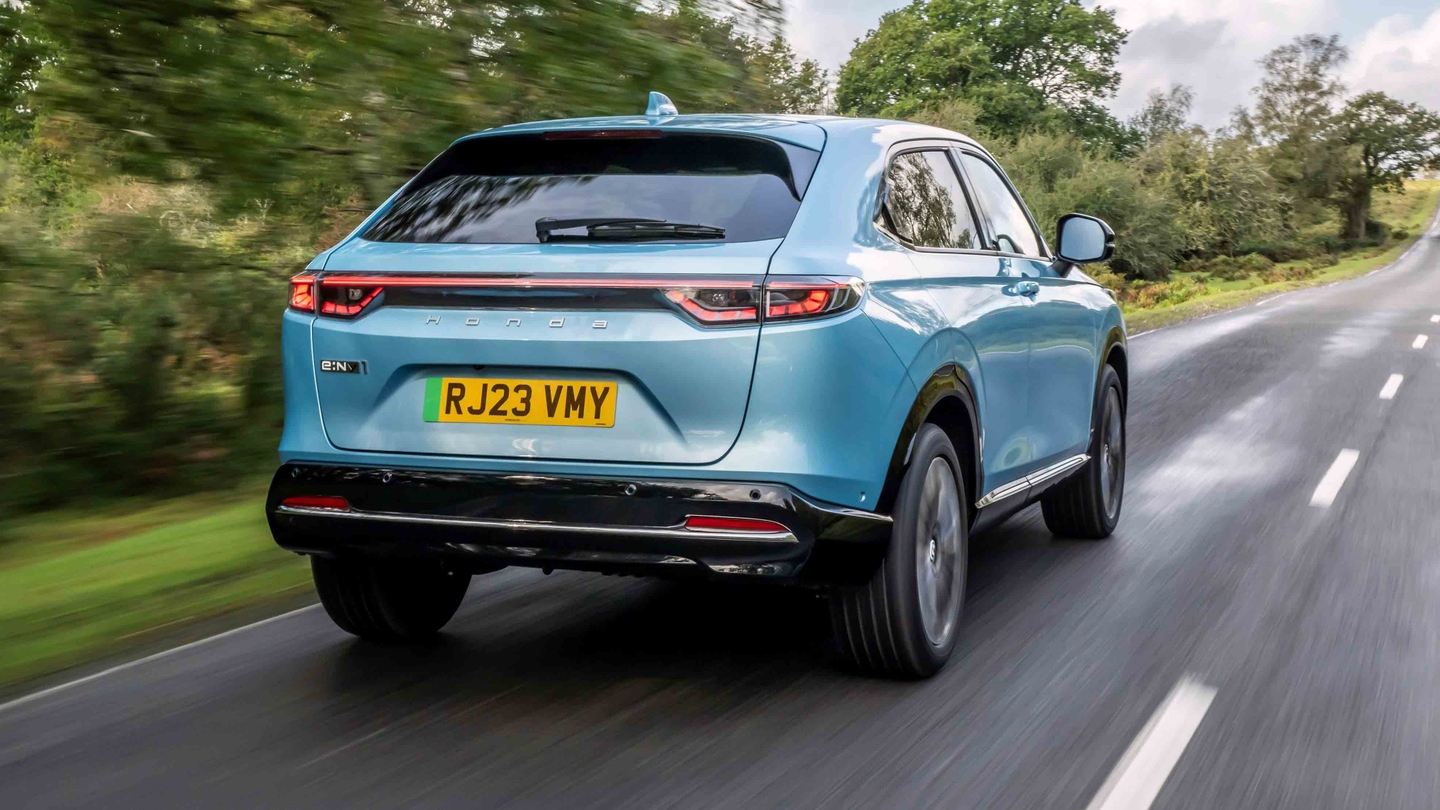
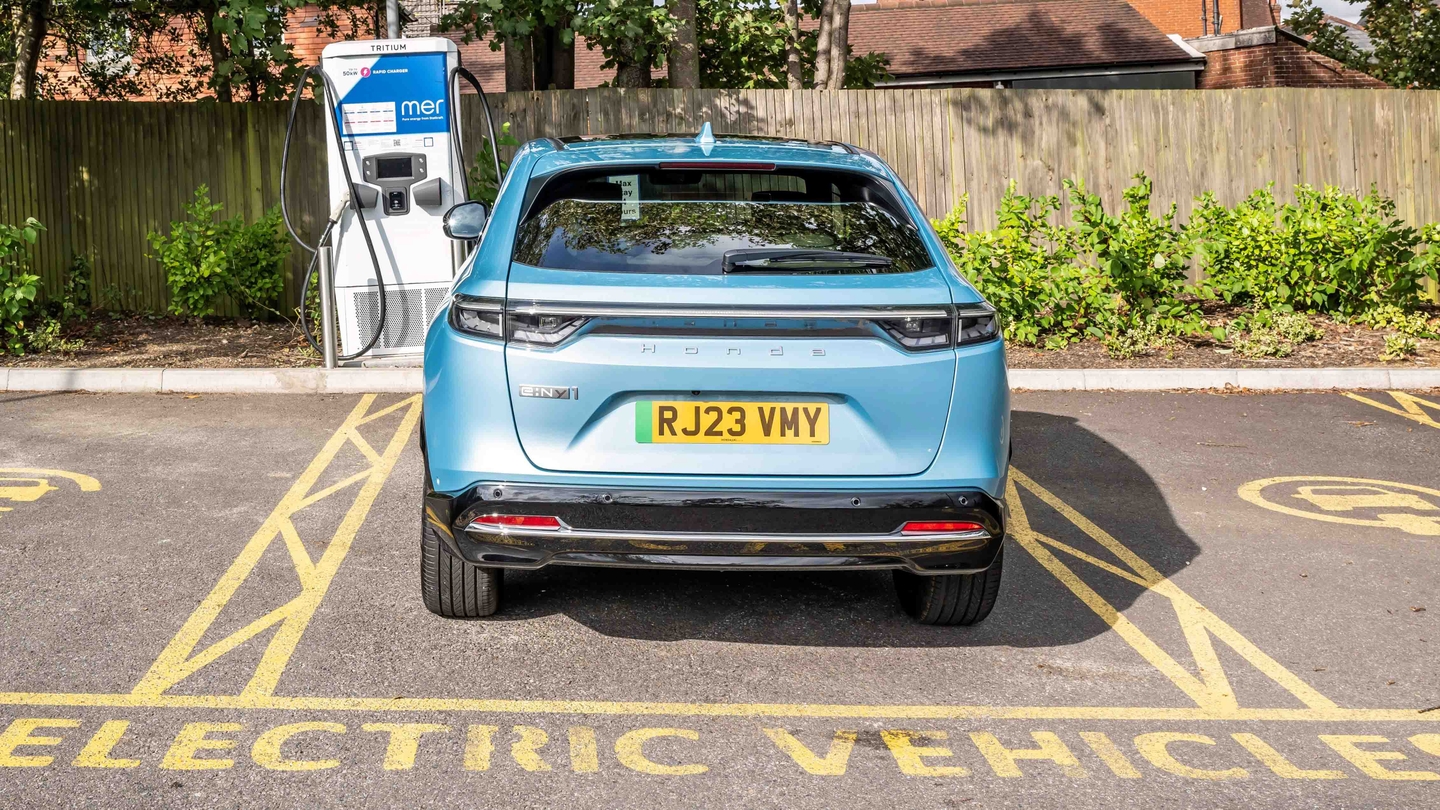
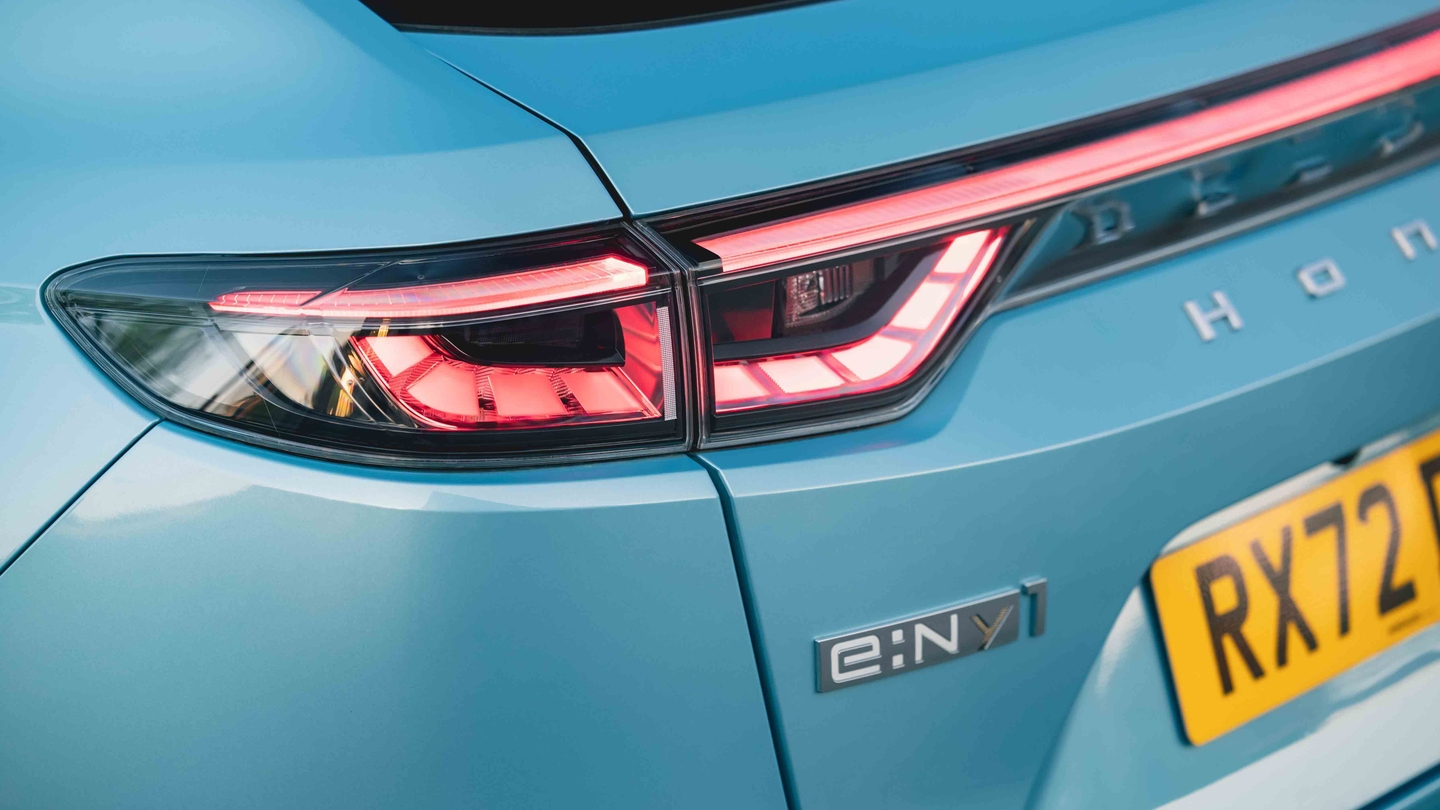
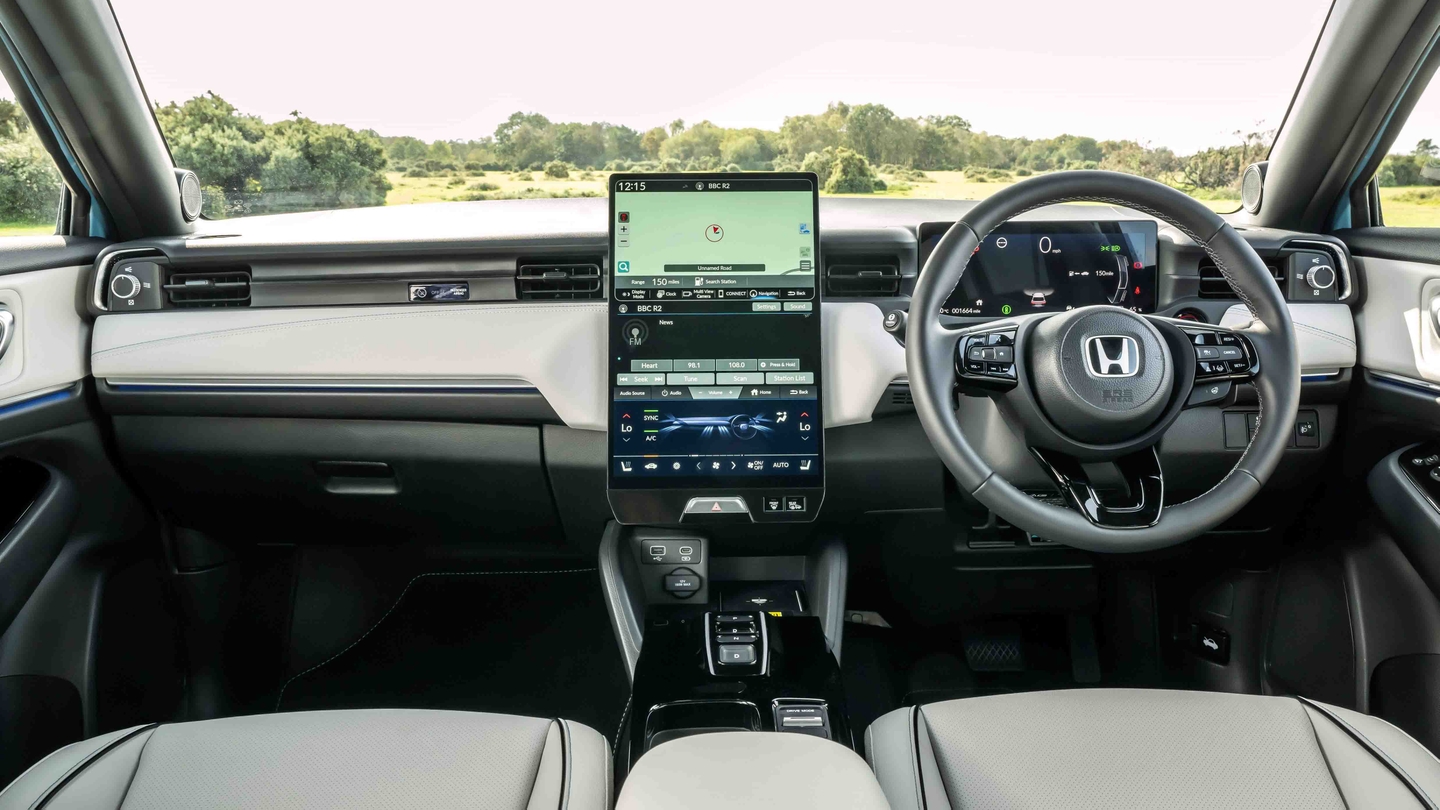
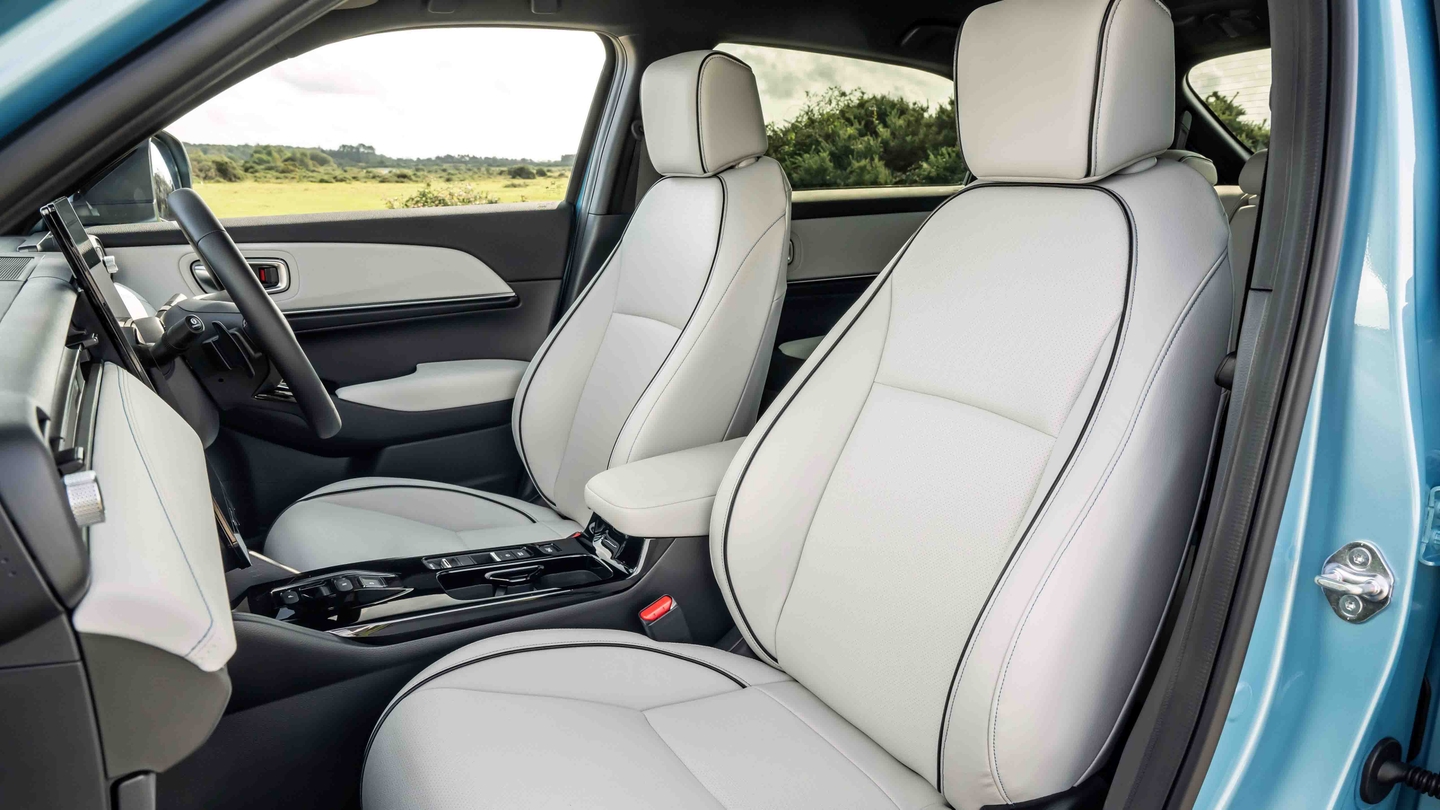
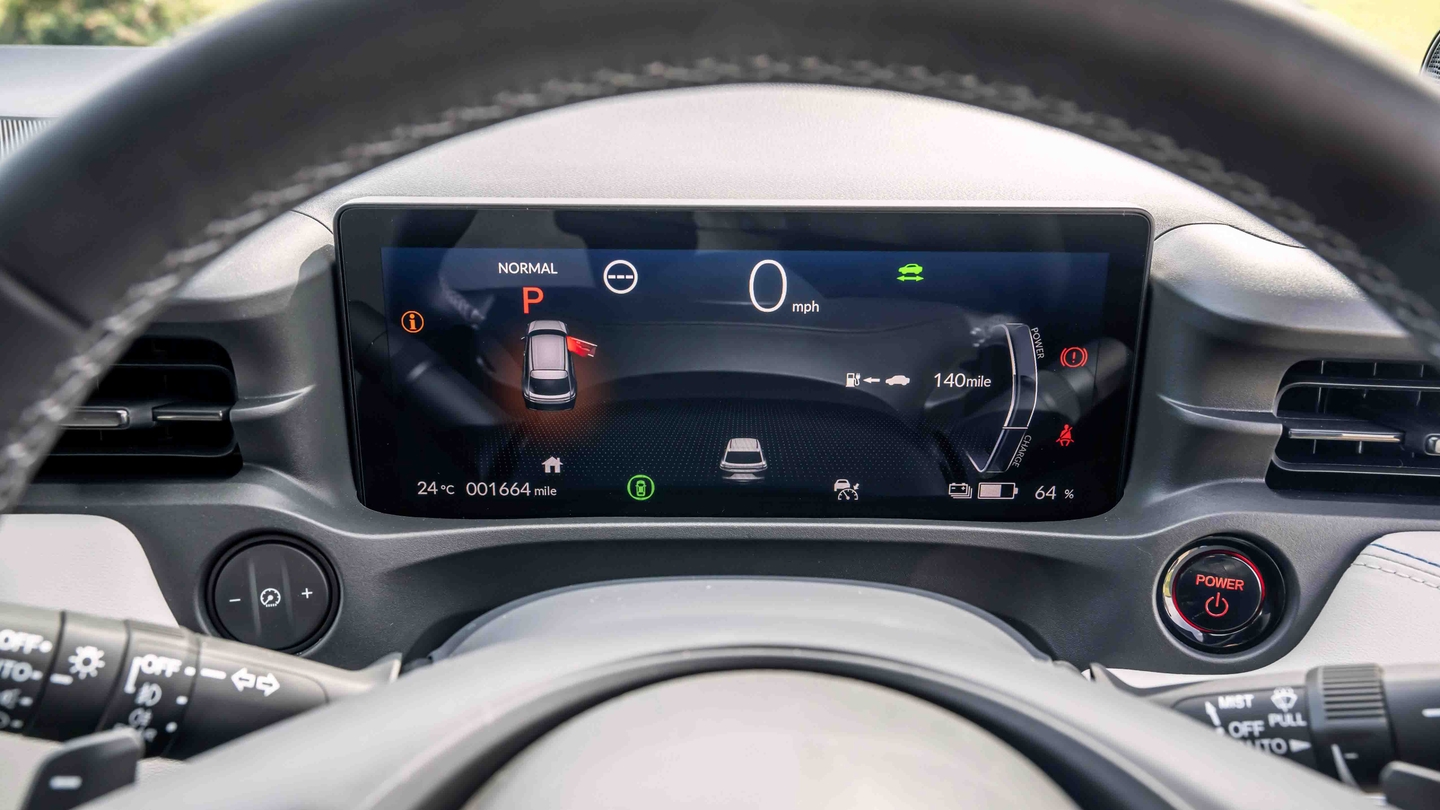
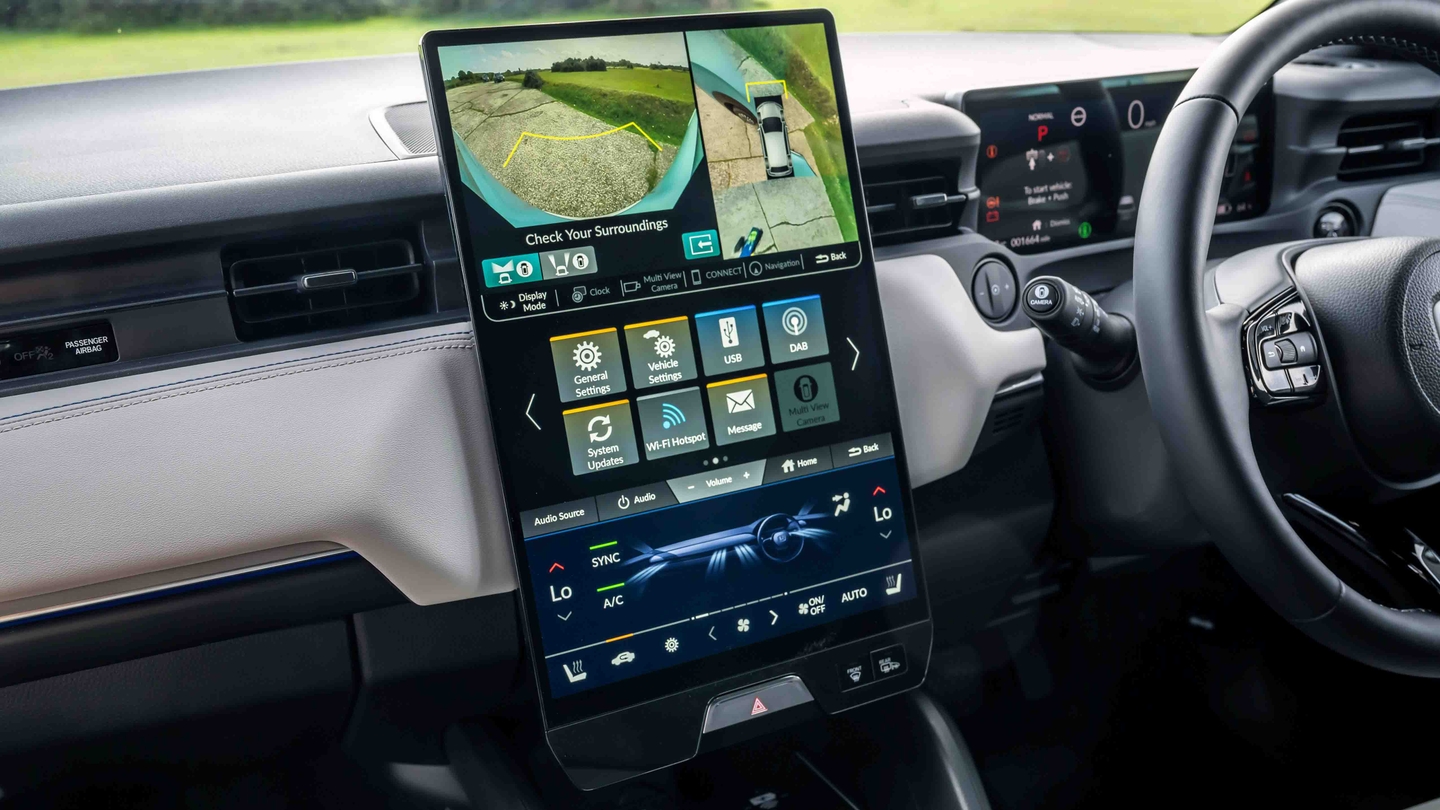
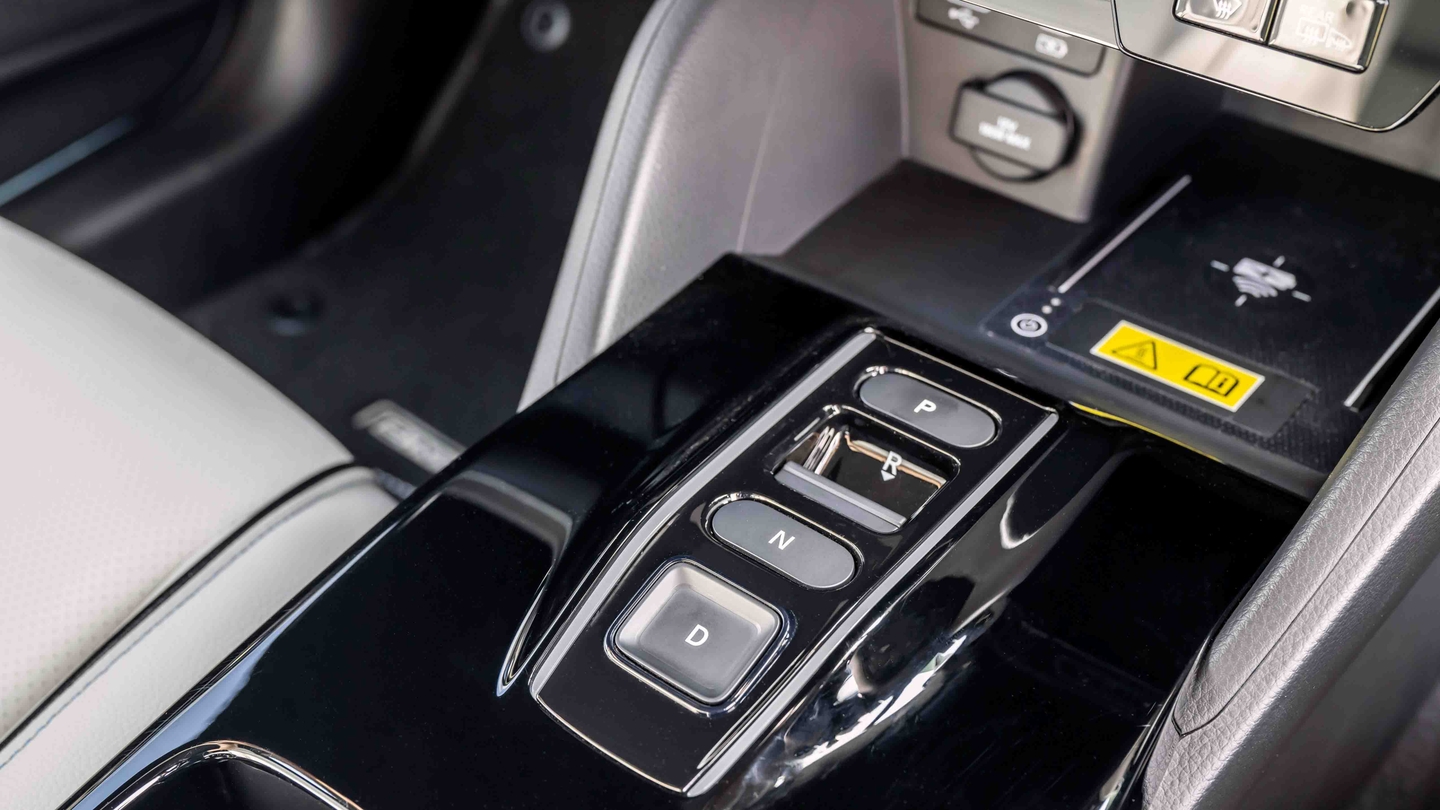
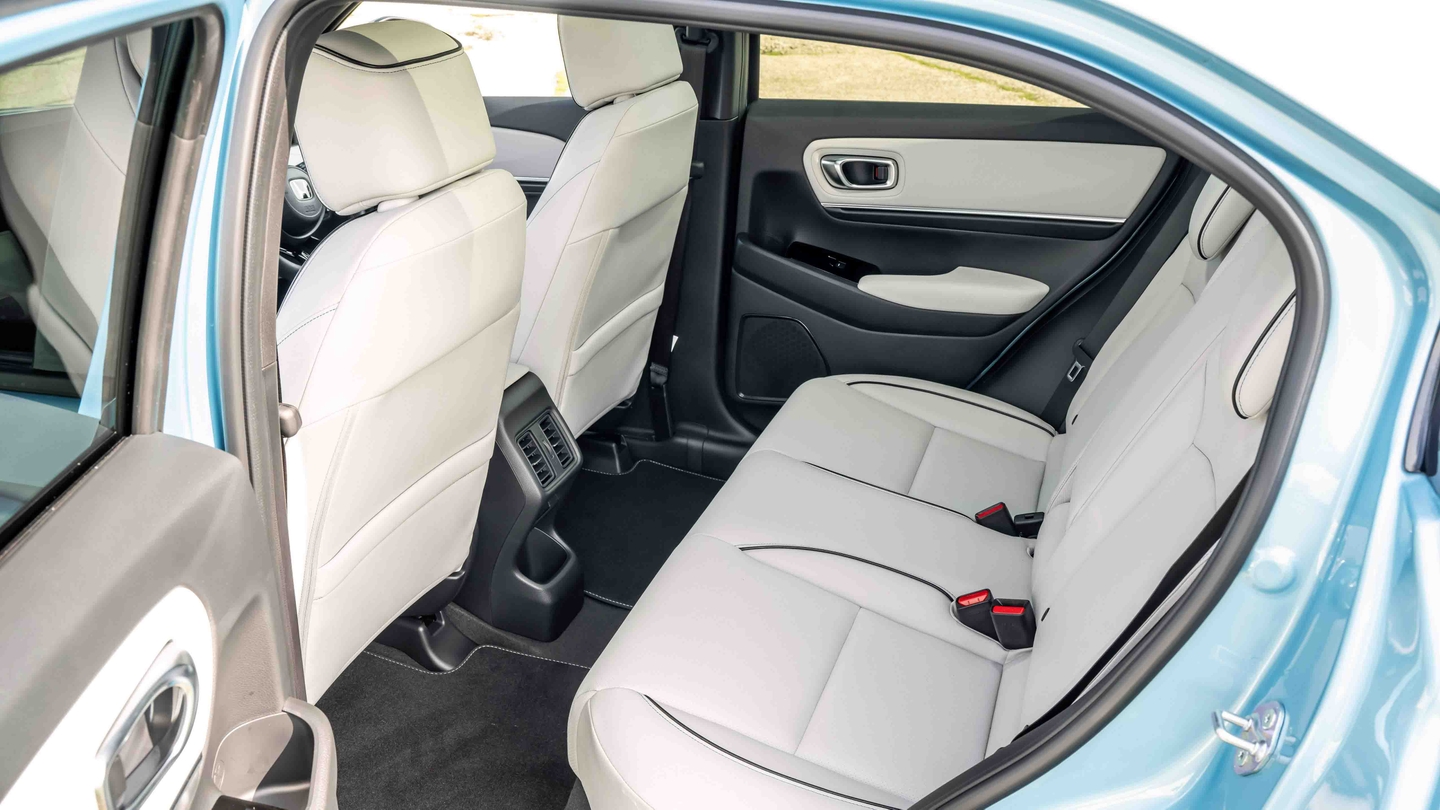
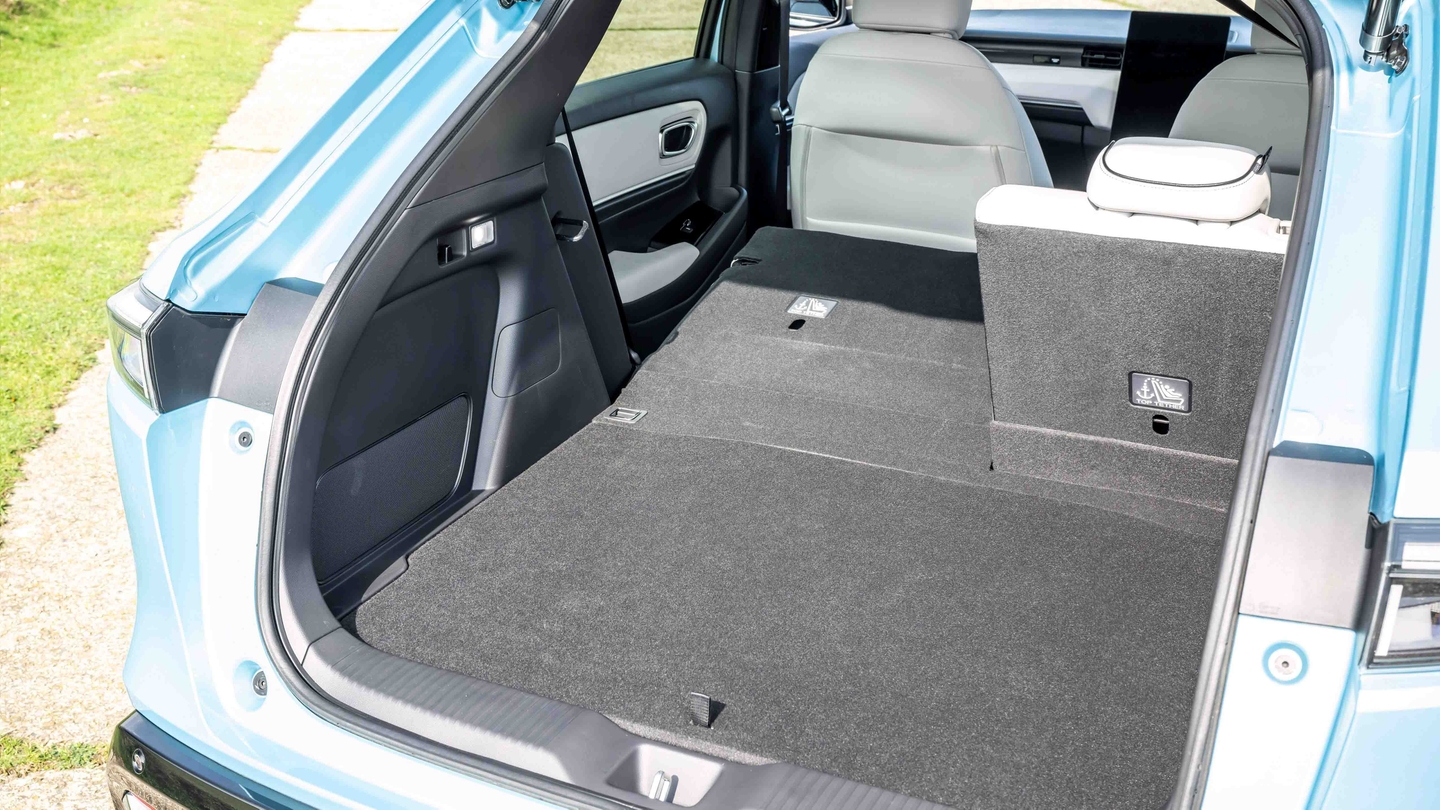
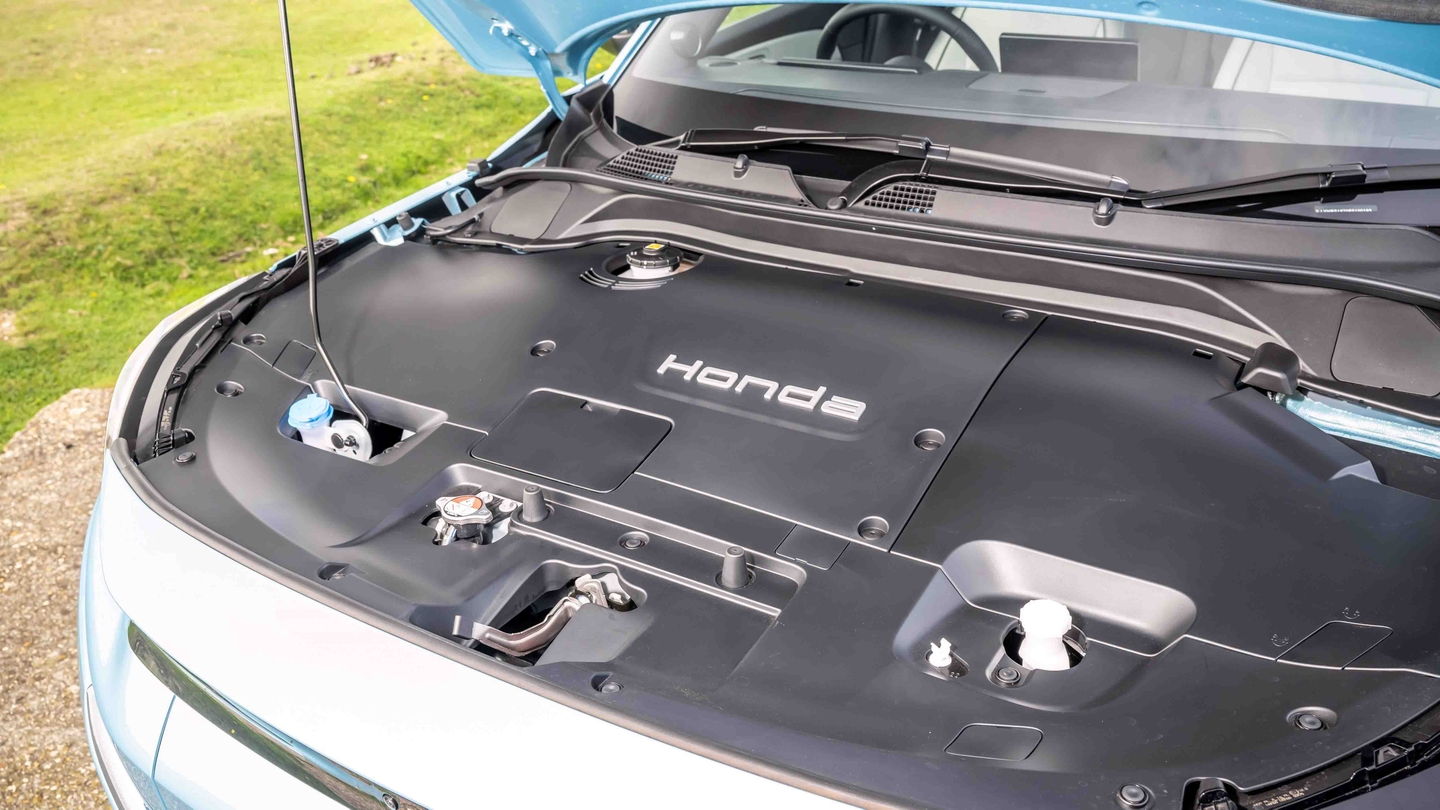
Honda e:Ny1 Review
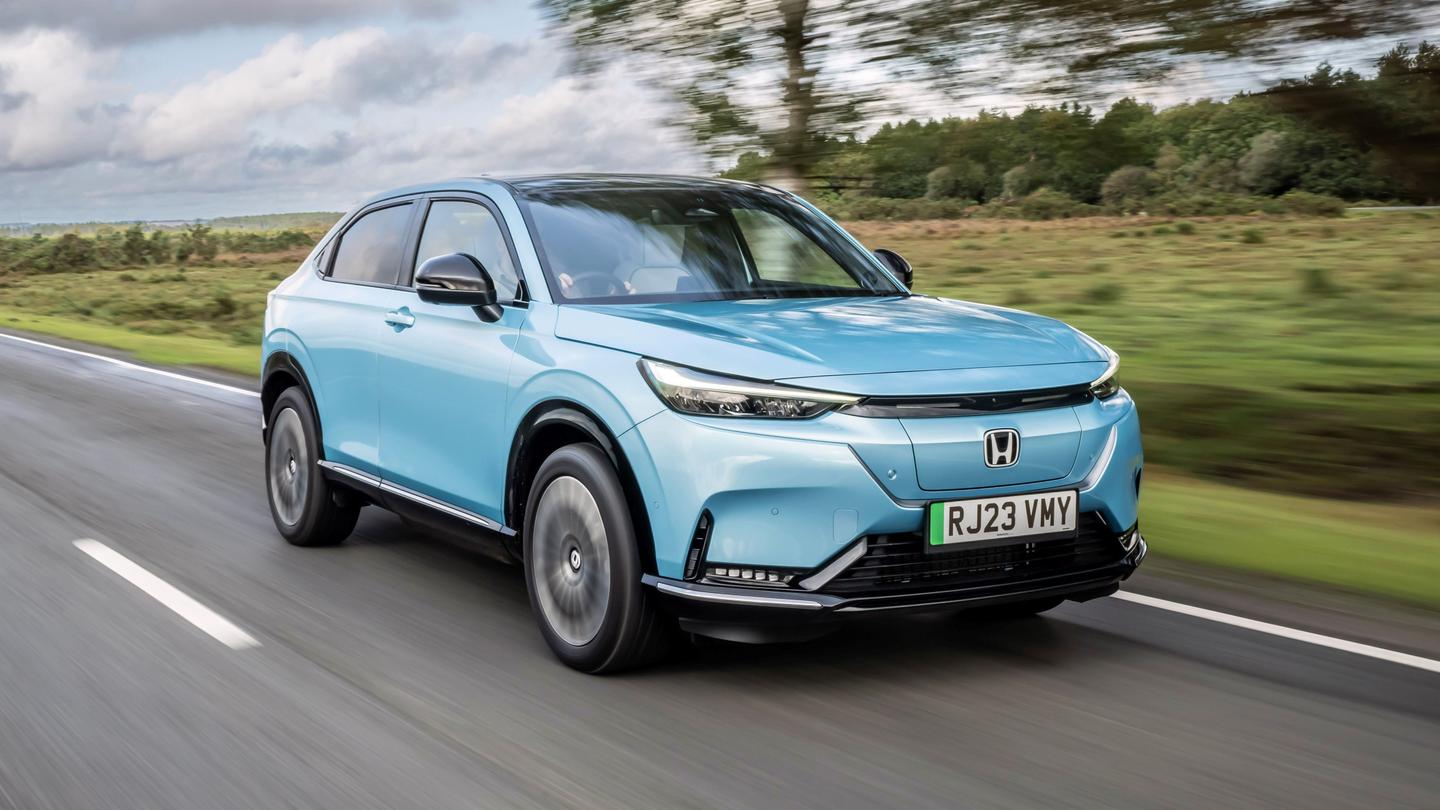
It’s clear that manufacturers haven’t got a clue what to name their electric cars. Just what is that jumble of letters, numbers and punctuation on the back of this Honda?
But the Honda e:Ny1 isn’t just alphabet soup; it feels half-baked. And with so many talented rivals and the rapid improvement in EV tech, it already feels like a last-generation model.
- Strong build quality
- Touchscreen is responsive
- Well equipped
- Nervy driving experience
- Range and charging figures lag behind rivals
- Rivals are more practical
Should I buy a Honda e:Ny1?
Honda is capable of creating incredible cars – from exciting performance cars like the Honda Civic Type R and cool concept cars to very economical hybrid cars and cars with clever engineering.
We have high expectations of Honda, but the awkwardly named e:Ny1 is none of those things we’ve just mentioned. Compared to the Civic and the Jazz and the Honda e, the e:Ny1 feels like Honda’s engineers phoned it in. And for its first electric SUV too. We’re not angry, we’re just disappointed.
"The e:Ny1 is a Honda with a trendy interior!"
The e:Ny1 isn’t bad, mostly, but it’s very average in most areas – especially against rivals such as the Hyundai Kona Electric and Skoda Elroq. The Honda's range and fast-charging figures are acceptable at best, its boot is smaller than you’d hope for in a family-focused SUV, and its touchscreen has a few baffling quirks.
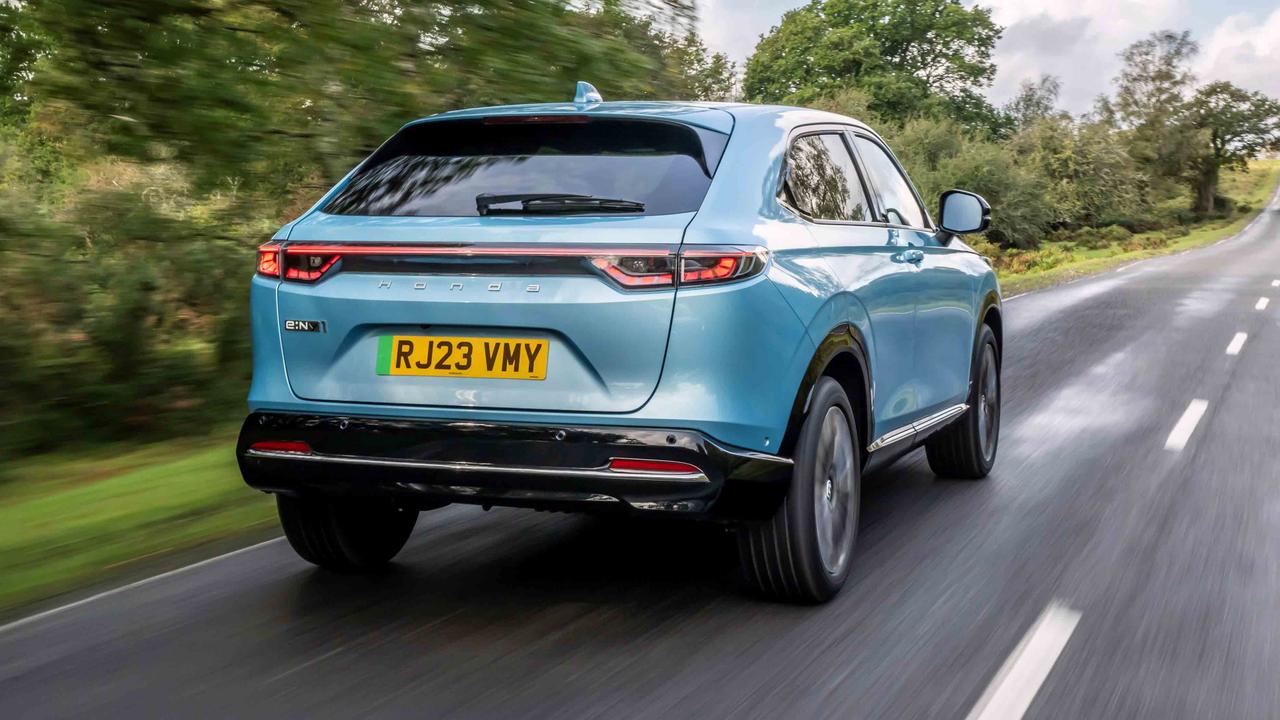
Its styling doesn’t stand out either. Even though it’s Honda’s first electric SUV, it looks almost identical to the hybrid HR-V – which it apparently doesn’t share a platform with.
And Honda has decided that the e:Ny1 is worth more than £40,000 as a new car. For cars registered after March 2025, that means an annual tax bill of over £600 until the early 2030s. It certainly isn’t a good new car buy, but look at year-old examples and marvel at how they’re half price already.
The Honda e:Ny1 is a much better car at £20,000 than at £40,000 – although, once again, so are rivals.
Interior and technology
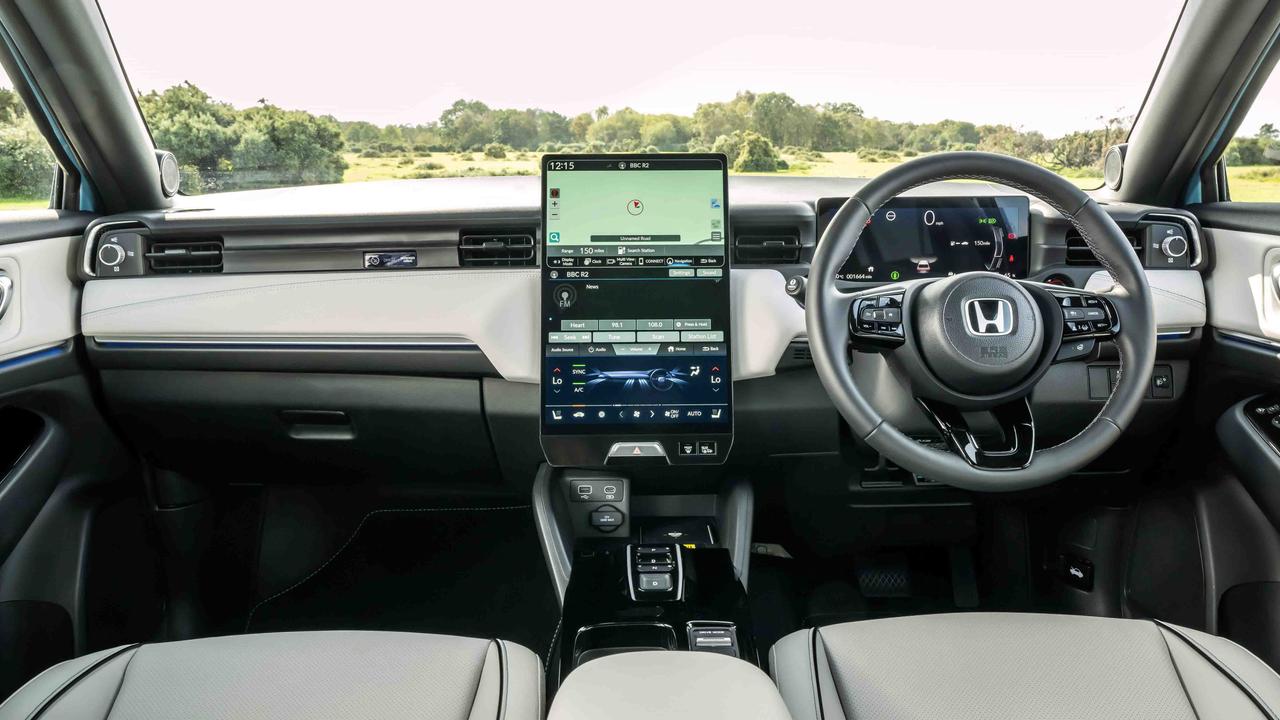
The e:Ny1 is a Honda with a trendy interior! That massive portrait touchscreen could’ve come out of a Tesla, Polestar or something Chinese and tech-focused. And there’s a cowl-less driver’s display which looks modern as well.
There’s ambient lighting to coolly illuminate the cabin after dark, and a nice double-stitched soft panel across the dashboard. The piped leather seats are lovely, especially in white – the black leather is more practical but a bit drab in comparison. It has the typically Honda feel of being built to outlive its occupants, too.
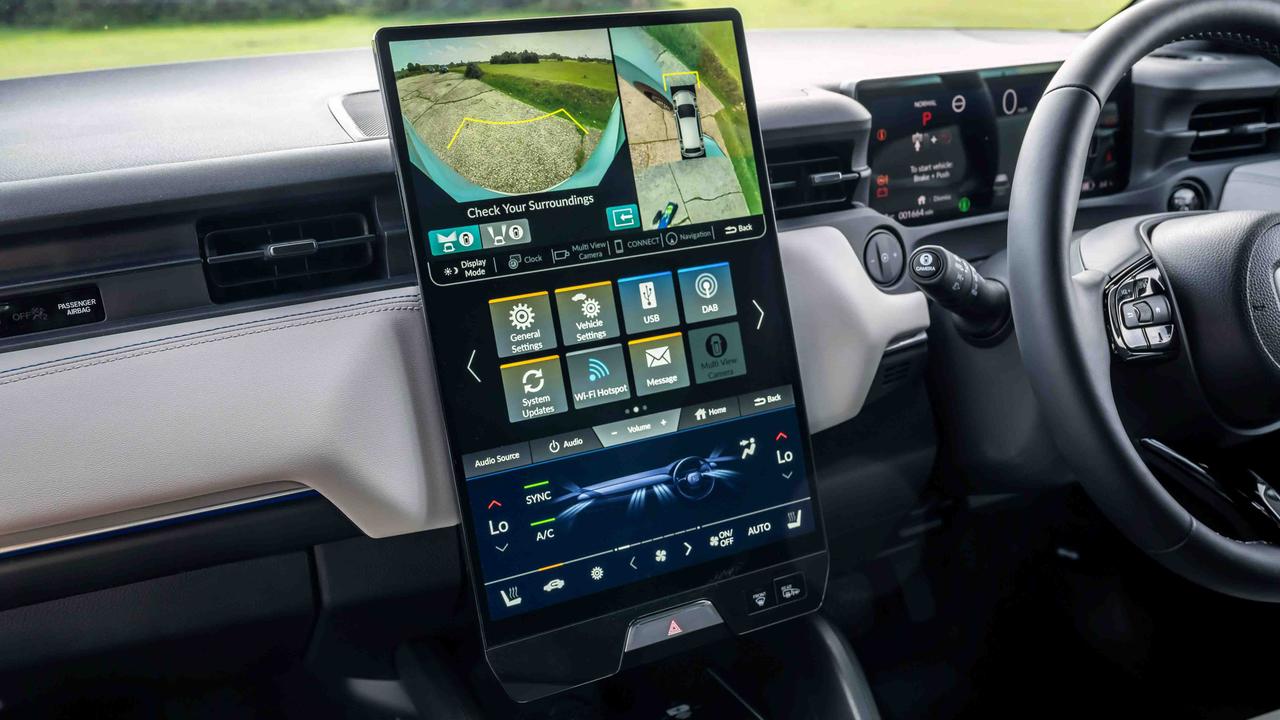
The touchscreen is split into three sections, with the bottom one being used for the climate controls. We like how the sections make the screen easy to use, and that you’ve always got your climate functions to hand. Plus it’s super responsive to your touch.
But Honda’s infotainment system isn’t really built for a big portrait layout. It still features lots of buttons in quite a messy layout, and a lot of the buttons simply aren’t used for the vast majority of the time. What’s more, there’s some duplication of functions, which suggests Honda’s tech engineers could’ve used the space much better, or given the screen a cleaner, less cluttered look.
The digital driver’s display isn’t very cohesive, with lots of competing information seemingly scattered around at random.

Poke around the cabin and there’s more evidence that Honda’s brightest minds were maybe on a day off when the e:Ny1 was designed. While we love the double sunroof on top-spec models, the cover for it is removable and fiddly – making it very easy to lose.
Elegance trim opens the range, and there’s plenty of equipment to enjoy. Keyless entry, heated and powered front seats, wireless phone charging, a reversing camera, LED lights all round, wireless Apple CarPlay (and wired Android Auto) and two-zone climate control are all standard. Upgrade to the Advance trim and you’ll also get the aforementioned sunroof, plus a heated steering wheel, park assist and an electric bootlid.
Practicality
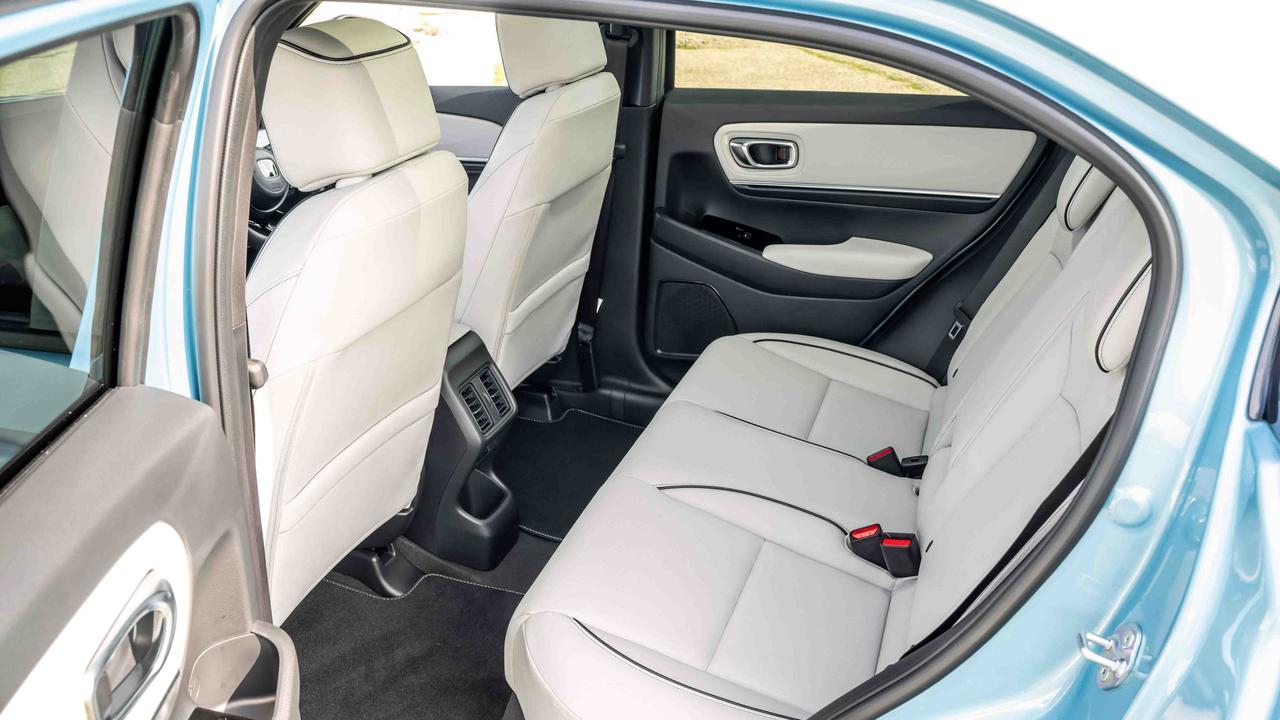
Climb into the back of the Honda e:Ny1 and you should have no issue finding a comfortable position. There’s a lot of legroom to spare, and enough headroom for tall adults – even with the sunroof. With a flat floor, it shouldn’t be too difficult to squeeze in three adults across the rear bench for shorter trips. The Isofix points are easily findable, and there are USB sockets and cupholders back there too.
The floor is high and the windows are shallow, meaning you don’t get an amazing view out of them – so kids might feel travel sick. The high floor presents a problem for tall adults sitting in the front, because the seat doesn’t go quite low enough so, if you’re tall, you’ll be staring at the roof instead of through the windscreen.
There’s not a lot of adjustment in the steering wheel, and your front passenger can’t adjust the height of their seat.
Honda insists on using a stack of four different buttons for the gear shifts, which are annoying to use and take up a load of space that could otherwise be used for storage. Otherwise, the glovebox is a good size and there’s a sufficient amount of usable storage upfront.
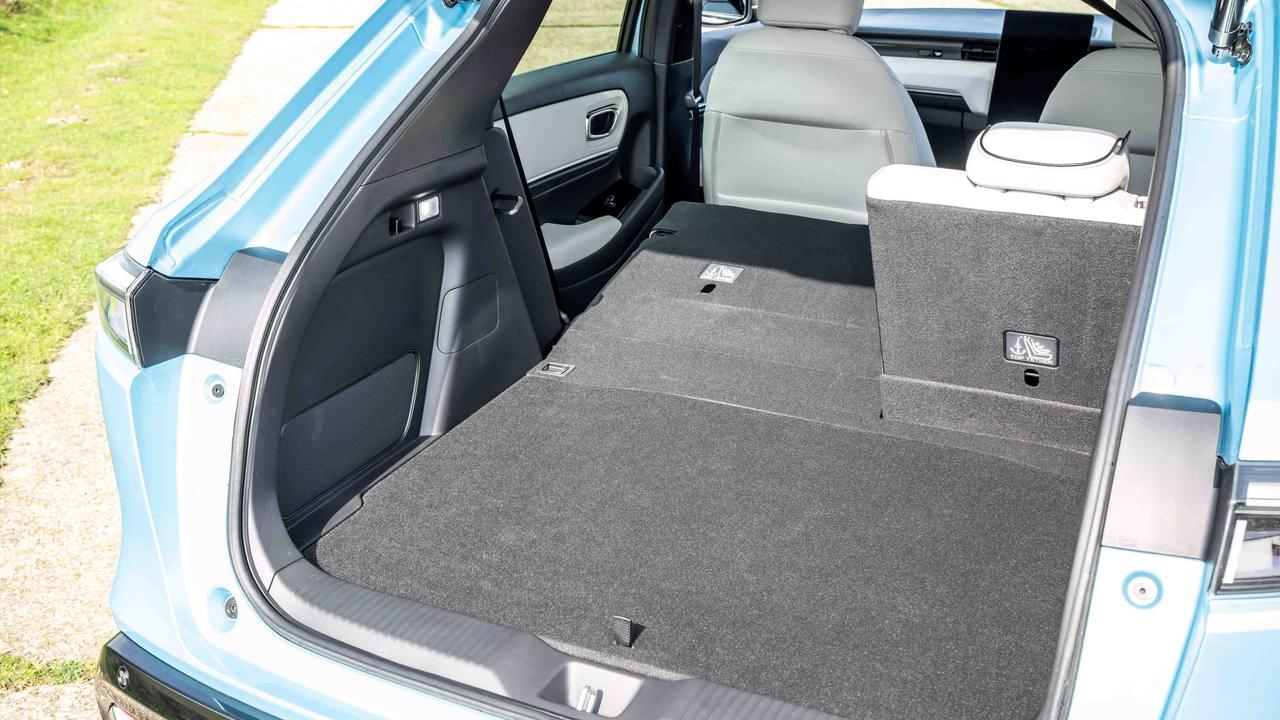
The boot is merely average for the class (366 litres for Elegance trim; 344 litres for Advance). It’s a good square shape and doesn’t have a load lip so it’s easy to chuck heavy items in, and will be enough for a weekly shop or a couple of suitcases. But it’s short of features and key rivals have more space. Besides the Vauxhall Mokka Electric, the e:Ny1 falls short of the Peugeot e-2008, Skoda Elroq and Kia EV3.
There’s a bit of cable storage under the boot, but not having a frunk is a missed opportunity – open the bonnet and you’ll see nothing but a whopping plastic tray.
Range and performance
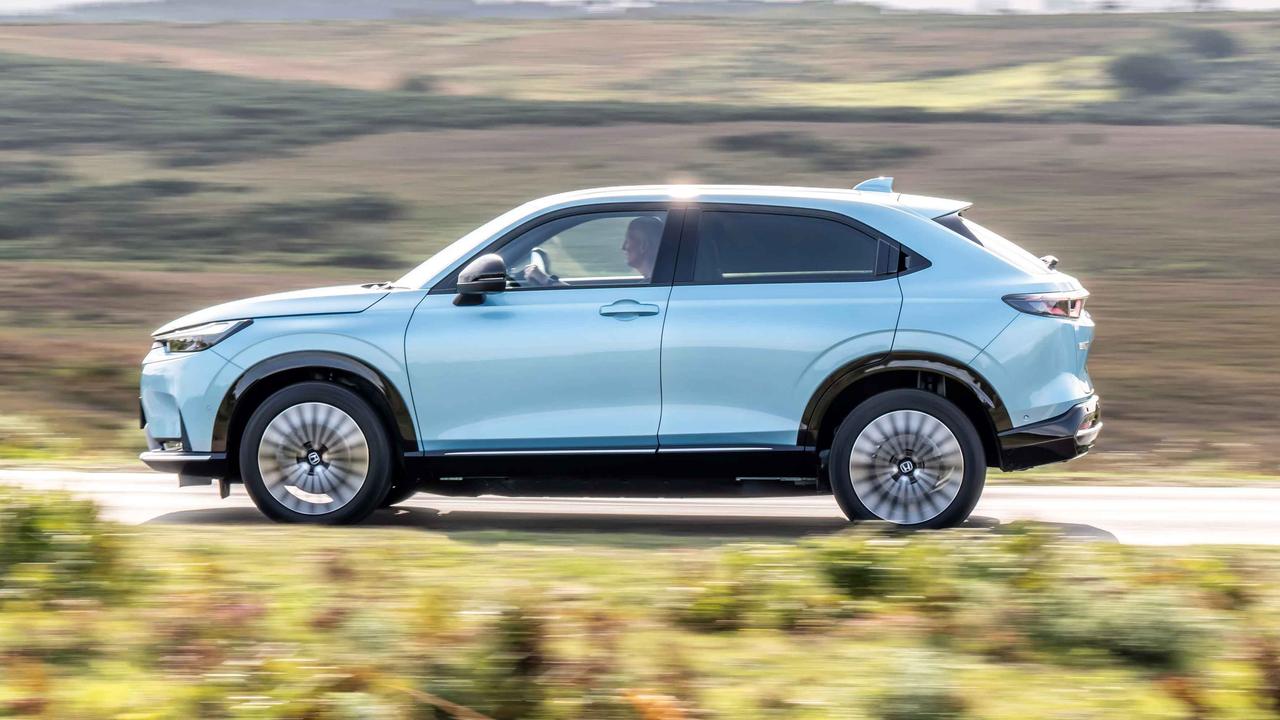
All Honda e:Ny1s come with a 69kWh battery, which is reportedly capable of 256 miles between charges. But it seems that the e:Ny1 is very sensitive to the conditions and who’s behind the wheel – more so than other EVs. In summer, you may see 3.5 miles per kWh – getting you close to the official estimate – but the efficiency drastically falls in winter, according to reports. Therefore, it can be hard to plan long journeys in the e:Ny1, and your running costs will wildly fluctuate over the year.
And if you’re having to rely on public chargers when the e:Ny1 is less efficient than you expected, you’ll be spending a lot of time waiting. The maximum charging rate is just 78kW, whereas it’s 175kW for the Elroq and 135kW for the EV3. Expect a 10-80% charge to take 45 minutes or more.
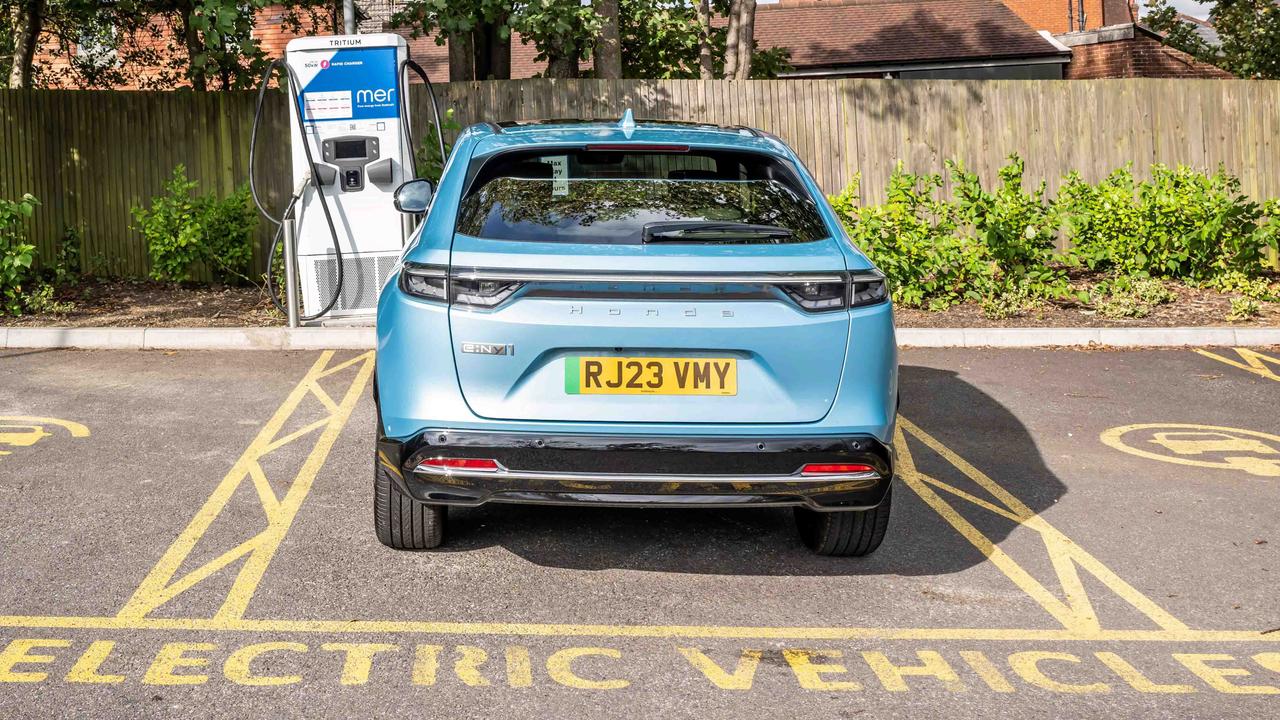
Or you can charge from a home wallbox, but the e:Ny1 makes this a little trickier than it should be as well. For scheduling charging, you need to tell the car when not to charge – which just seems backwards.
Every e:Ny1 has a front-mounted 204hp motor, with a 0-62mph time of 7.6 seconds and a top speed of 99mph. It feels very nippy, and there’s a good level of midrange shove to get you up to speed quickly.
Driving and comfort
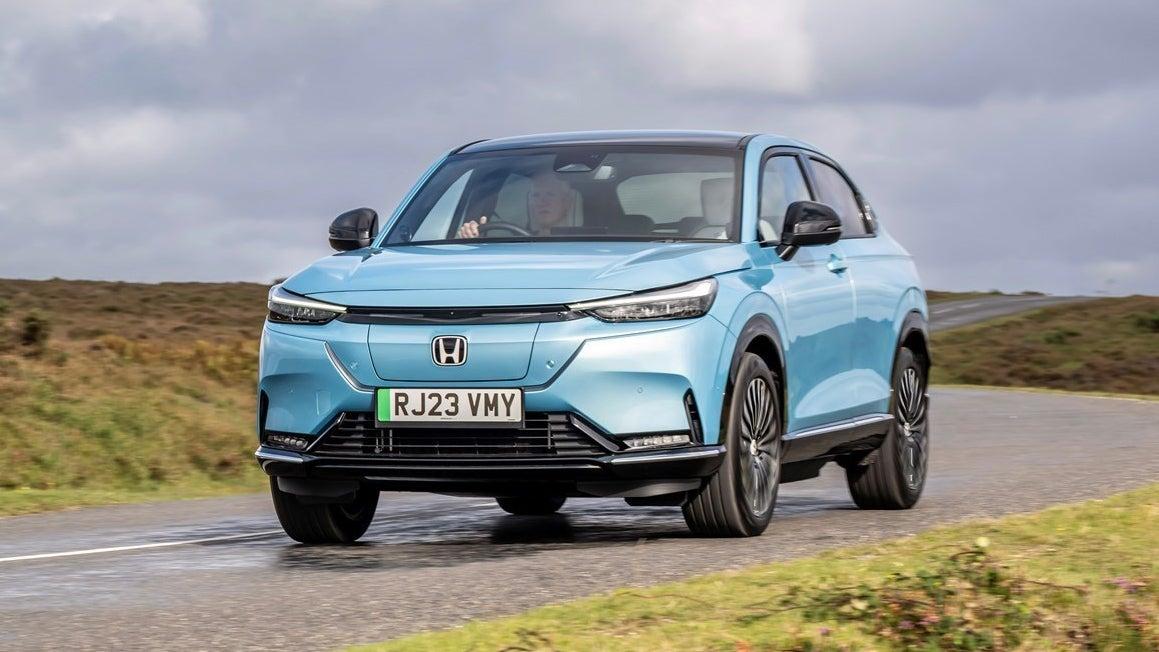
Honda says the e:Ny1 sits on a different platform to the engine powered HR-V, but we sense a few porky pies.
The front wheels should be capable of controlling the available power and steering at the same time, but the e:Ny1 is immensely prone to wheelspin. Try to exit a junction with any sort of vigour and the front wheels lose grip, shortly followed by multiple grabs by the traction control system.
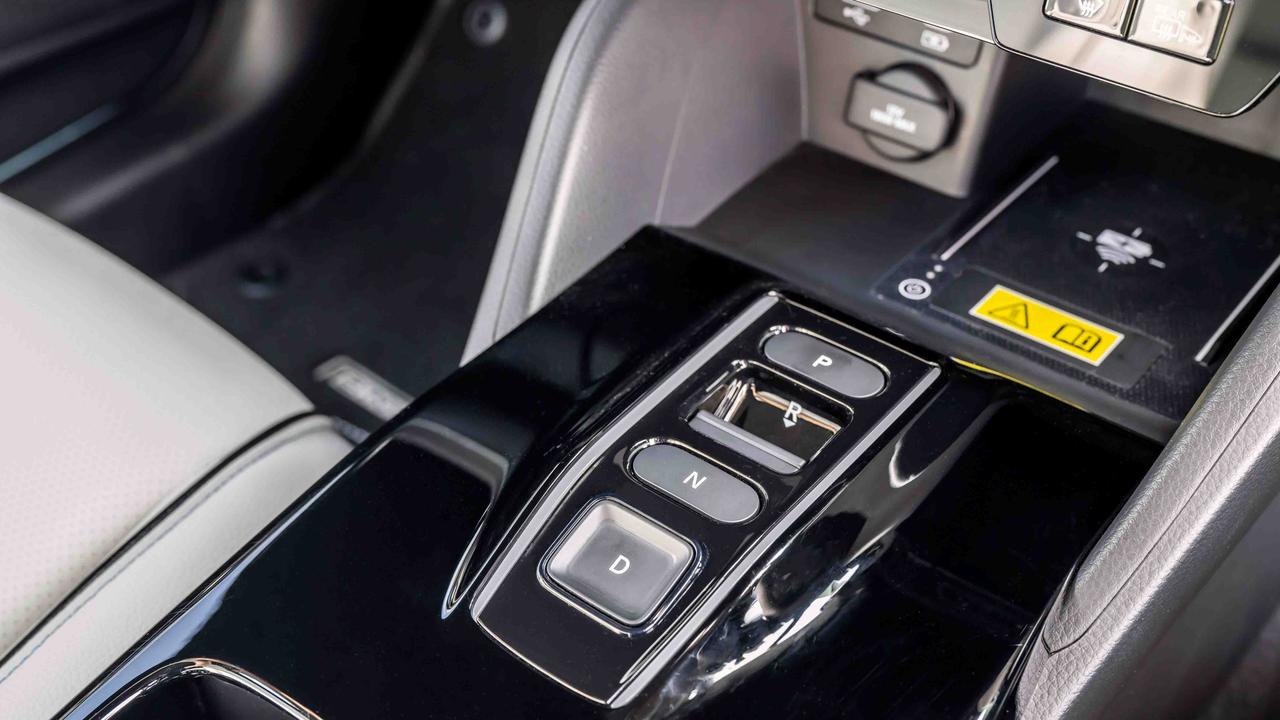
An EV developed from the ground up wouldn’t be overwhelmed like this, and it certainly feels like the e:Ny1 sits on a modified version of the HR-V’s platform.
Through corners, there’s not much improvement. It gets caught out by camber changes and potholes, and it lacks the poise of the impressive Civic. The Elroq and Kona Electric feel stable and controlled; the e:Ny1 can act unpredictably, like a spooked animal.
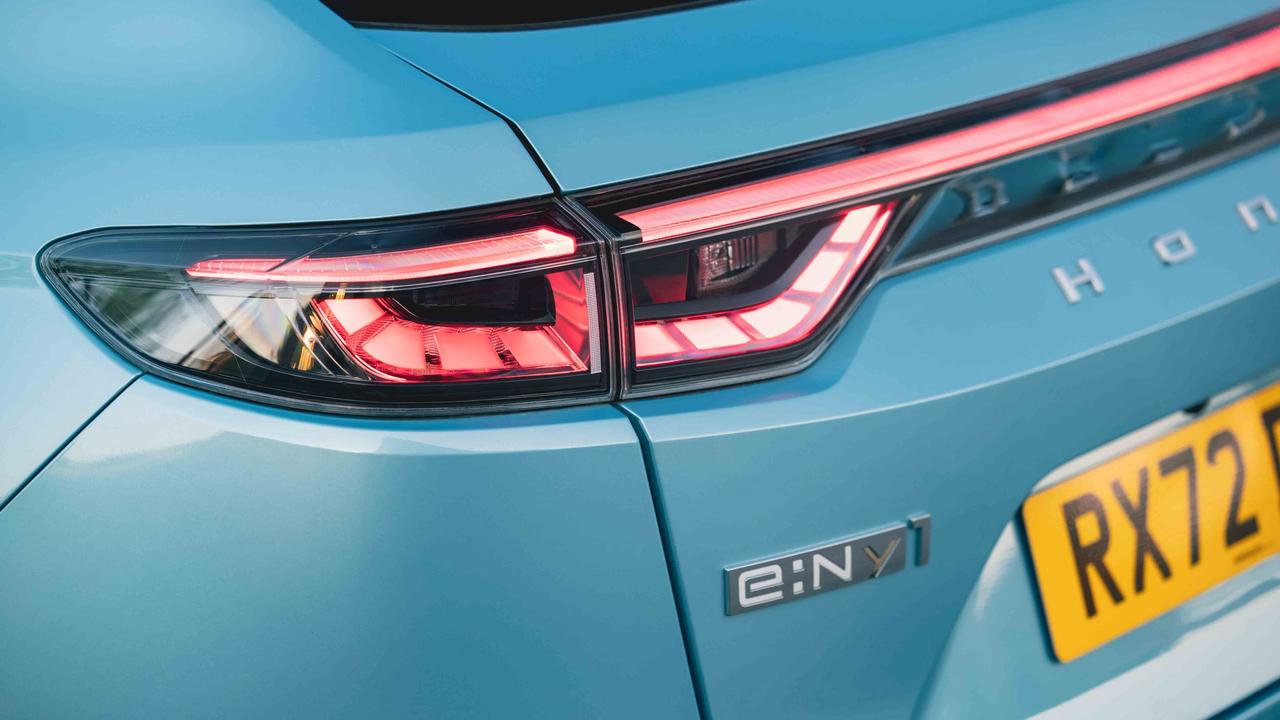
Perhaps this is why the e:Ny1 sits in a high insurance group – either 39 or 40 out of 50, depending on trim level. You’ll be paying a lot more for insurance than for the Elroq (group 22), e-2008 (group 27) or Kona (group 31).
There’s plenty of safety kit, such as lane-keep assist, traffic jam assist, speed limit recogntion and adaptive cruise control, but it’s very hard to turn a lot of them off.
High-speed refinement is decent enough, save for the audible e-motor and some thunks from the suspension over heavy impacts. The brakes are good, too.















































